Neurologic Lyme Disease & Alice In Wonderland Syndrome
Neurologic lyme disease & alice in wonderland syndrome. The Alice in Wonderland syndrome is a term applied to altered bizarre perceptions of size and shapes of a patients body and illusions of changes in the forms dimensions and motions of objects that a patient with this syndrome encounters. You may feel larger or smaller than you actually are. He initially awakened with a nightmare scared and screaming saying that his mind was.
The most common perceptions are at night. Nakaya et al 2011. It should be kept in mind that the Alice in Wonderland syndrome is not always associated with EBV and has also been reported to occur with coxsackievirus B1 Wang et al 1996.
LYME disease which is caused by the tick-borne spirochete Borrelia burgdorferi is associated with a wide variety of neurologic abnormalities1 2 3 4 5 6 7 Early in the illness many patients have. First described in 1955 Alice in Wonderland syndrome AIWS is a perceptual disorder characterized by distortions of visual perception metamorphopsias the body schema and the experience of time. Irst described in 1955 Alice in Wonderland syndrome AIWS is a perceptual disorder characterized by distortions of visual perception metamorphopsias the body schema and the experience of time.
Alice in Wonderland syndrome also known as dysmetropsia or Todds syndrome is a neurological condition that affects the brain and causes distortions of visual perception. An alteration of visual perception is found in that way that the sizes of body parts or sizes of external objects are perceived incorrectly. Binalsheikh et al 2012.
A high index of suspicion is required to diagnose and treat potentially curable diseases such as neuroborreliosis when they present with unusual signs. The name refers to Lewis Carrolls well-known childrens book Alices Adventures in Wonderland 1 in which Alice feels among other things her body growing both larger and smaller. The name refers to Lewis Carrolls well-known childrens book Alices Adventures in Wonderland1 in which Alice.
The most common perceptions are at night. People may experience distortions in visual perception of objects such as appearing smaller or larger or appearing to be closer or farther away than they actually are. Alice In Wonderland Syndrome or AIWS in short is a neurological condition where a person views reality differently.
Alice in wonderland syndrome AIWS describes a set of symptoms with alteration of body image. Also the signs of Alice in Wonderland syndrome or of metamorphopsia should be added to the clinical spectrum of Lyme neuroborreliosis.
He initially awakened with a nightmare scared and screaming saying that his mind was.
Nakaya et al 2011. Alice in Wonderland syndrome is. Alice in Wonderland syndrome A very interesting and characteristic neuropsychiatric syndrome has been reported to occur with IM the so-called Alice in Wonderland syndrome in which metamorphopsia bizarre distortions of spatial sense occurs similar to that of migraine. Pediatric neurologists at the Floating Hospital Tufts University Boston MA report a 7-year-old boy with Alice in Wonderland syndrome associated with Lyme disease. People may experience distortions in visual perception of objects such as appearing smaller or larger or appearing to be closer or farther away than they actually are. Alice in Wonderland syndrome also known as Todds syndrome or dysmetropsia is a neuropsychological condition that causes a distortion of perception. Micropsia which is more commonly known as Alice in Wonderland Syndrome is a visual neurological condition that affects the way people perceive objects. The Alice in Wonderland syndrome. Coven et al 2013.
It should be kept in mind that the Alice in Wonderland syndrome is not always associated with EBV and has also been reported to occur with coxsackievirus B1 Wang et al 1996. An alteration of visual perception is found in that way that the sizes of body parts or sizes of external objects are perceived incorrectly. Micropsia which is more commonly known as Alice in Wonderland Syndrome is a visual neurological condition that affects the way people perceive objects. Kuo et al 2012. The most common perceptions are at night. Alice in Wonderland syndrome also known as dysmetropsia or Todds syndrome is a neurological condition that affects the brain and causes distortions of visual perception. Binalsheikh et al 2012.





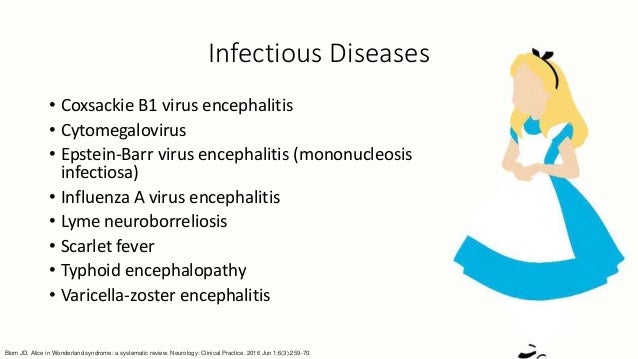
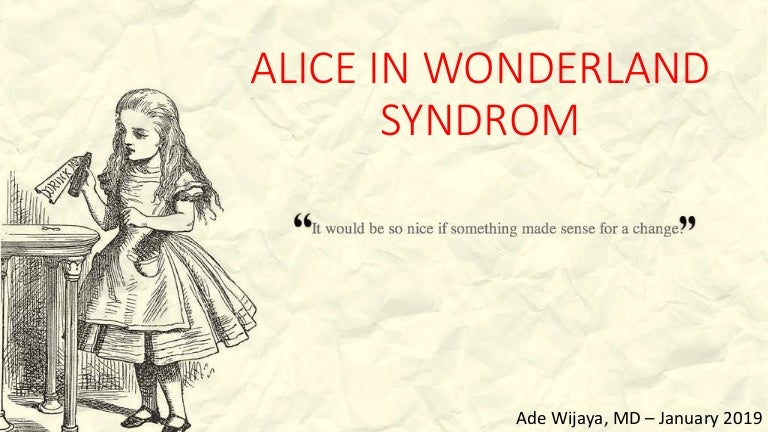








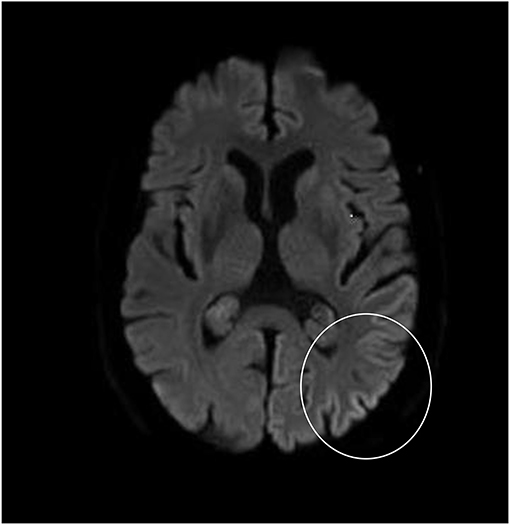
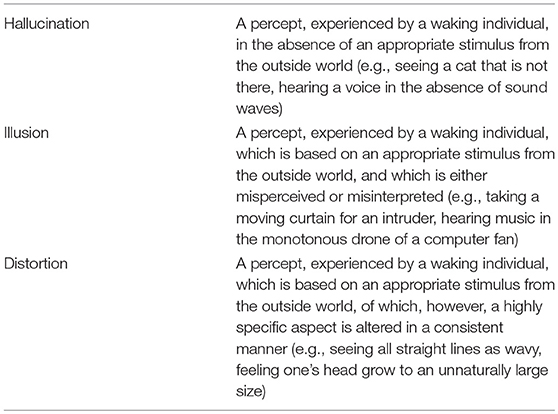












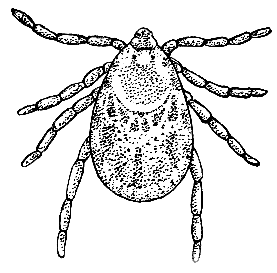




Post a Comment for "Neurologic Lyme Disease & Alice In Wonderland Syndrome"